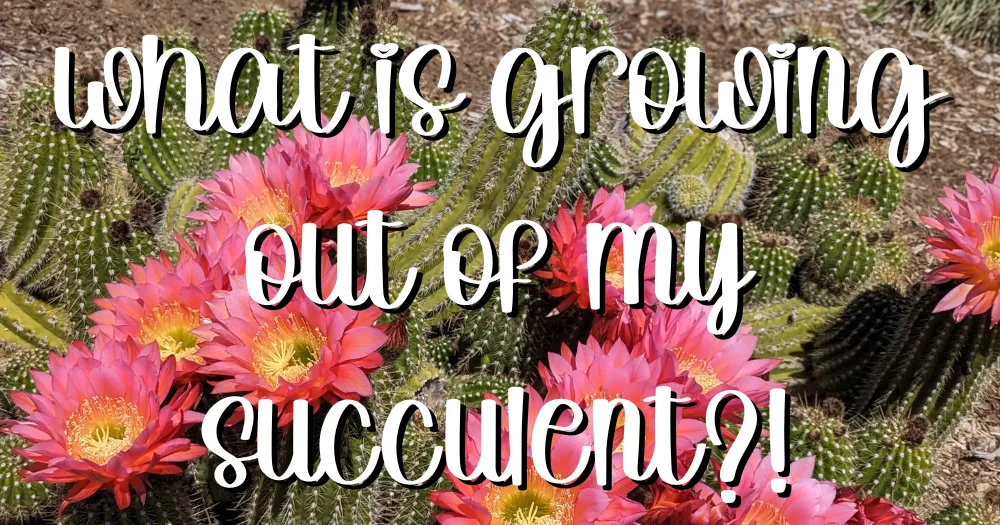So, you noticed some weird stuff growing out of your succulent lately and you’re wondering, what the heck is growing out of my succulent?! Succulents have some pretty strange quirks and the growths they produce can be bizarre and confusing. No need to panic though, in most cases these anomalous growths are harmless. Let’s see if we can identify what’s growing out of your succulent with the pictures below.
Dig in!
Some common weird growths on succulents include:
Flower stalks
On Succulents – Why is my succulent growing a long stem with flowers?
Many succulents bloom with tall, spiny or strangely colored flower stalks. Some don’t even produce leaves on the stalks. Flower stalks give succulents a chance to reproduce sexually through pollen and seeds.

On Cacti
If you see a fluffy growth on your cacti, you’re in for a treat! It is about to flower!

The cactus below is about to flower and is also for sale on Etsy! Shop small!
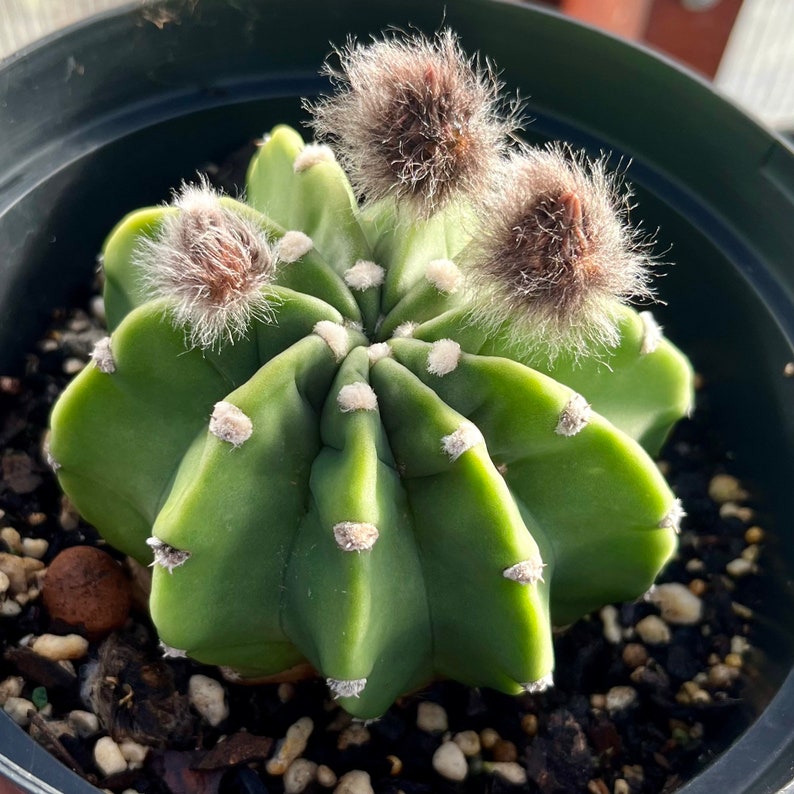
The Death Bloom
Some flower stalks are considered death blooms which means the plant will die after flowering.
You might also like: The Resilient and Beautiful Aloe Brevifolia: A Low-Maintenance Succulent for Your Home
Normal Flowering Habit
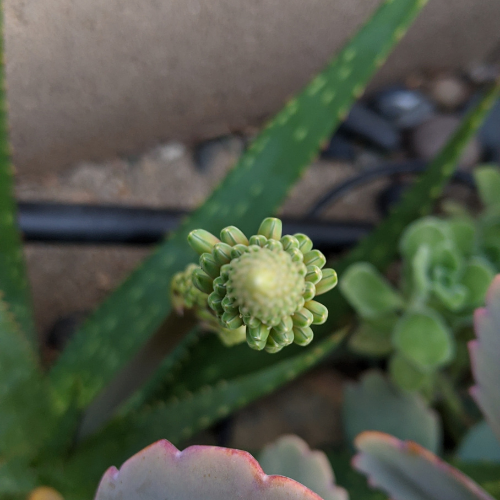
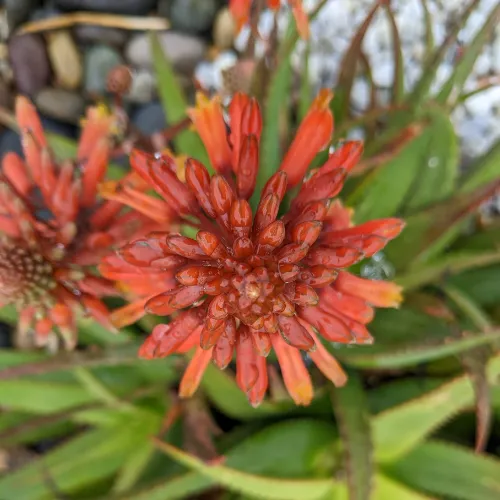
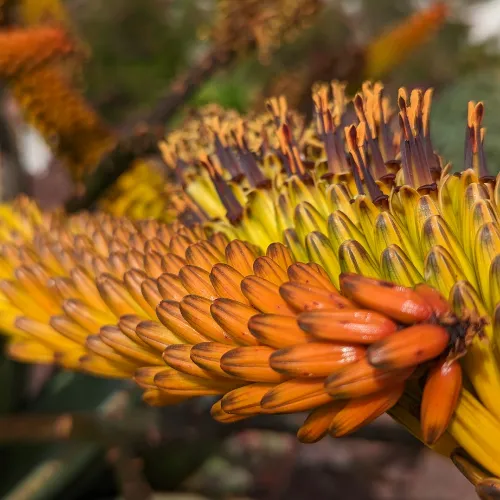
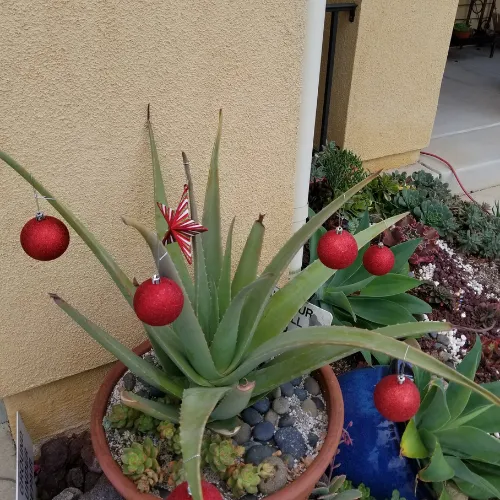
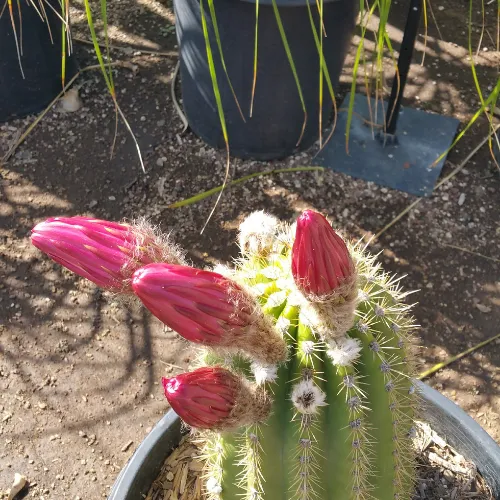
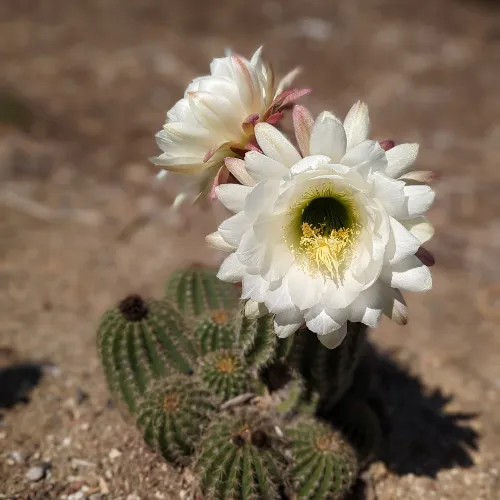
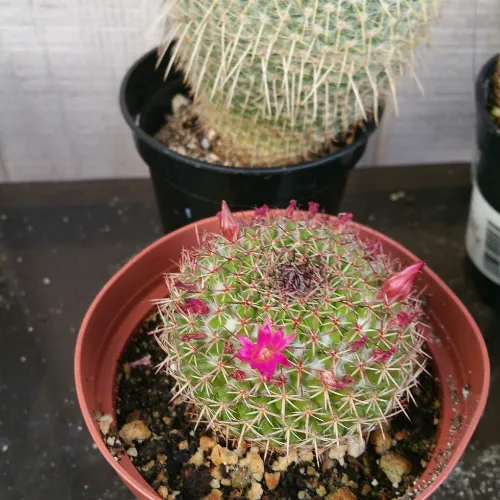
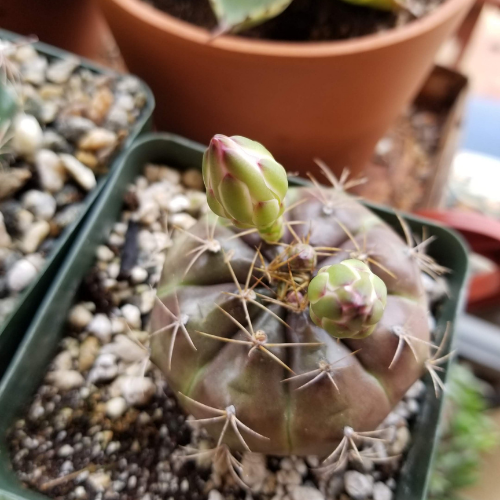
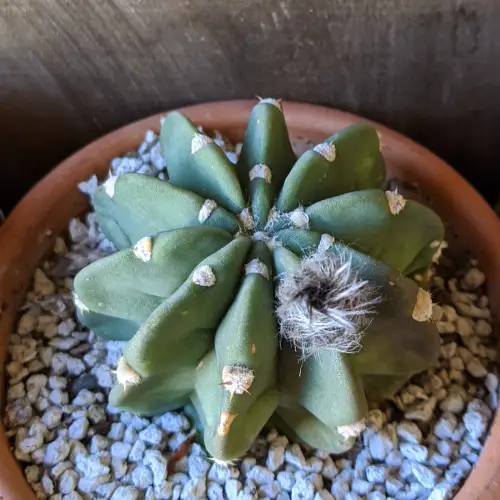
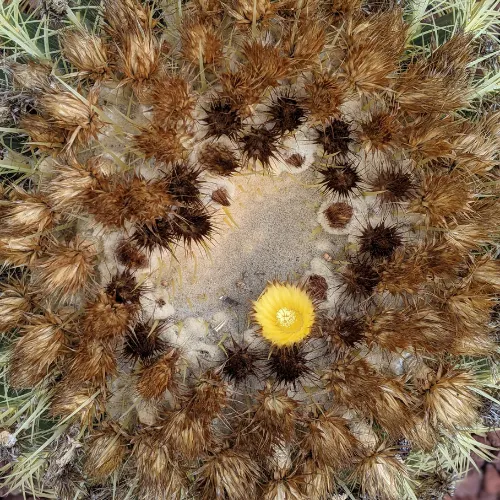
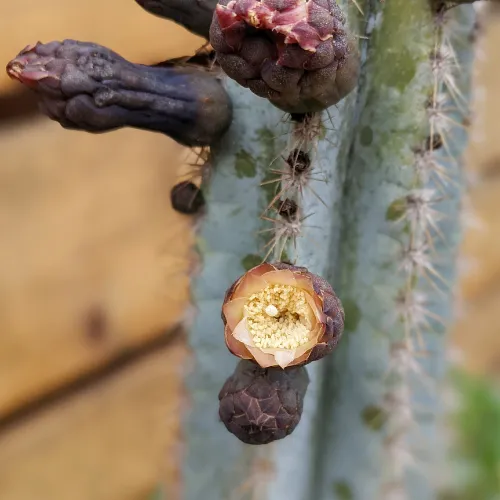
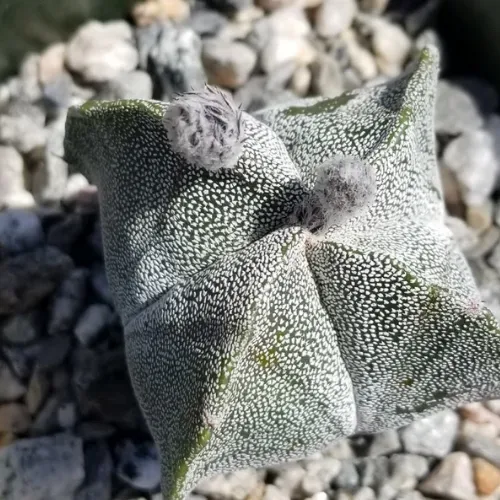

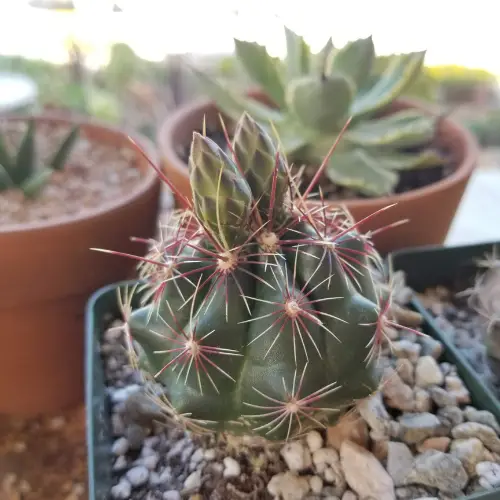
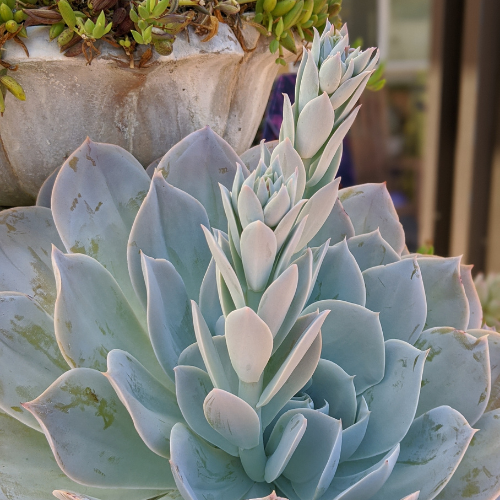
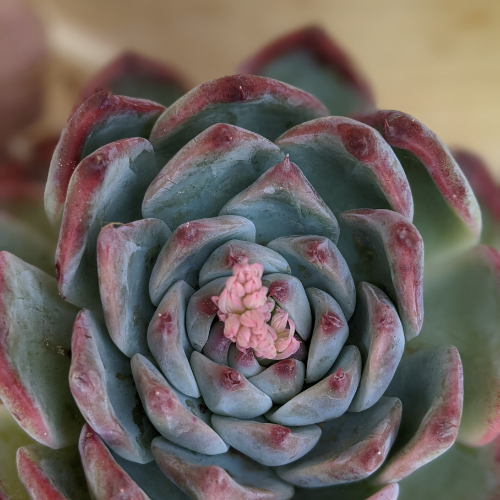
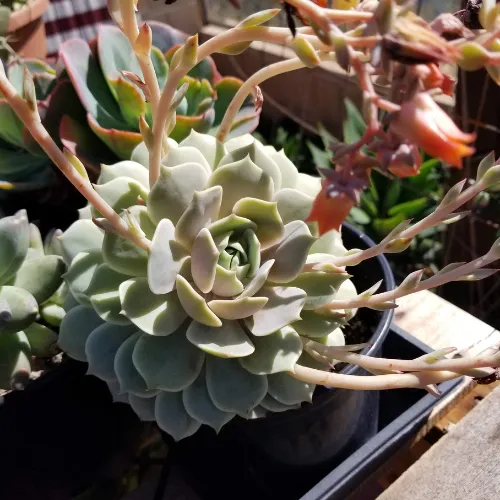
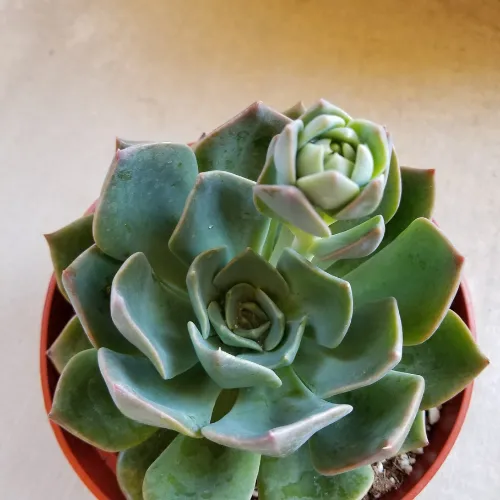
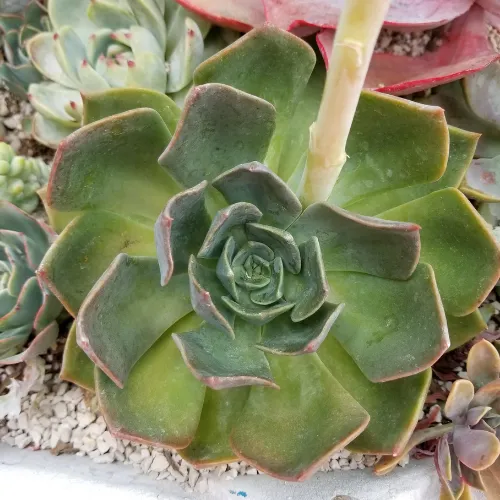
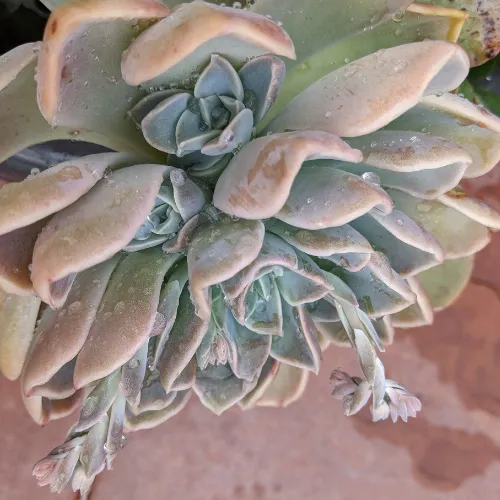
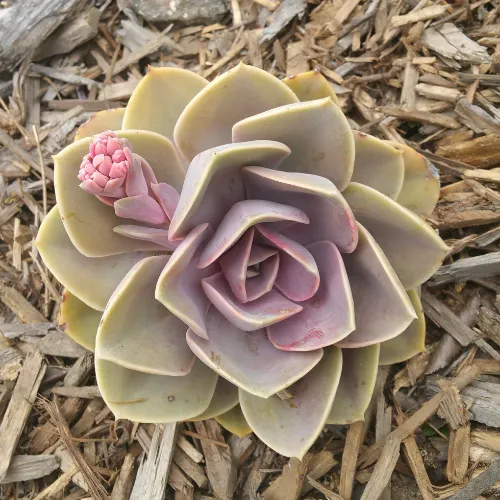
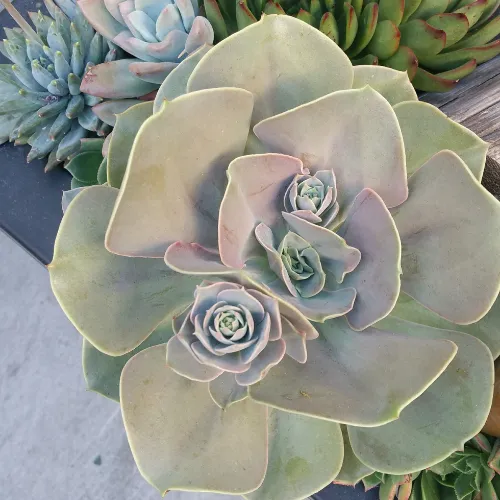
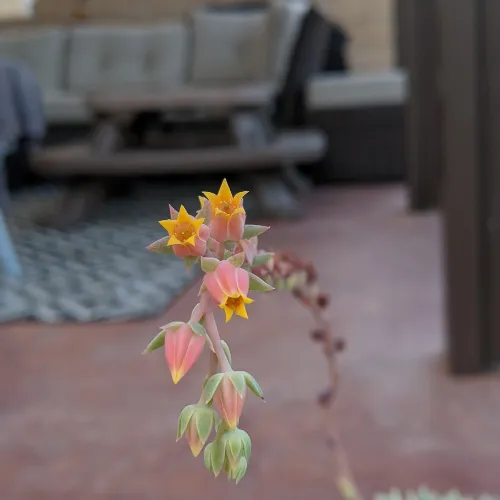
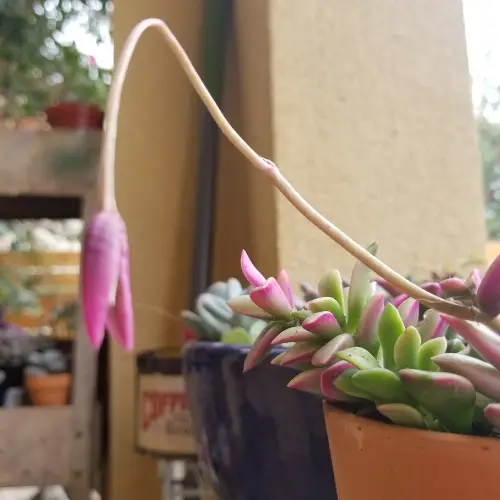
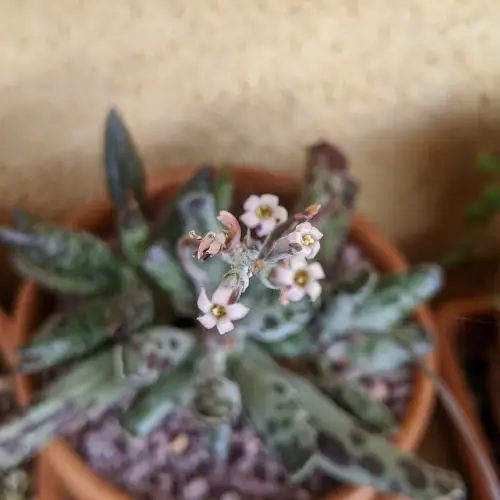
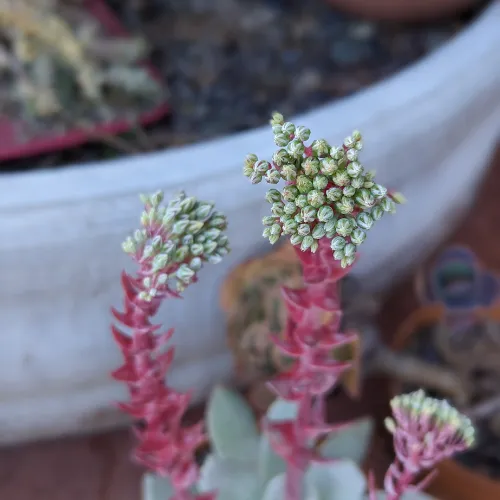
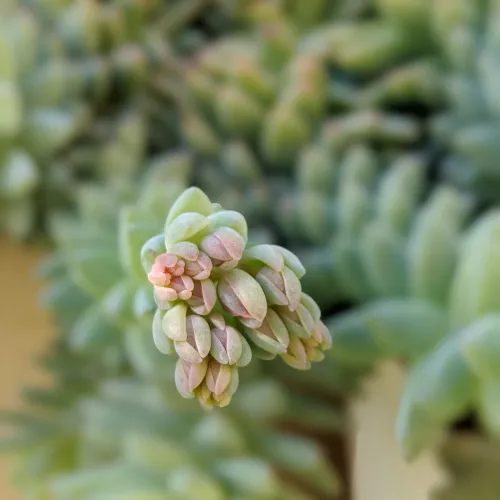
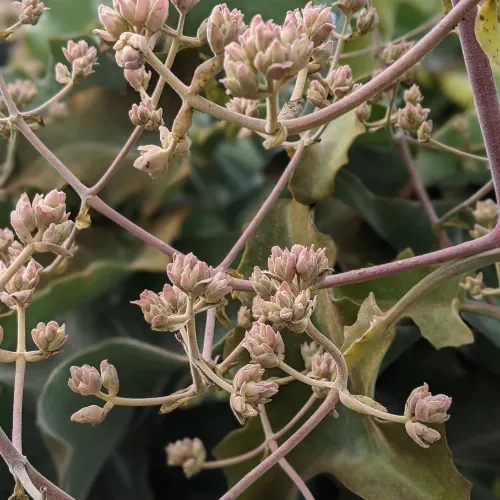
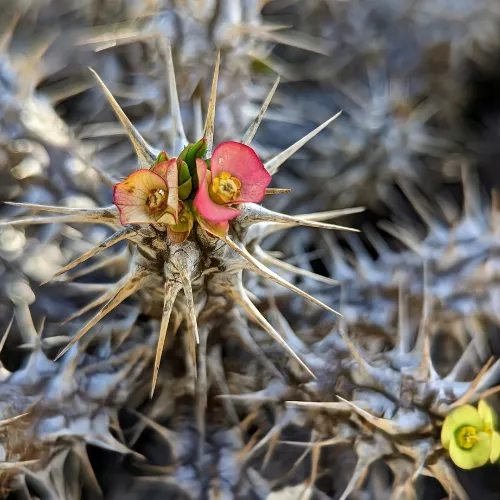
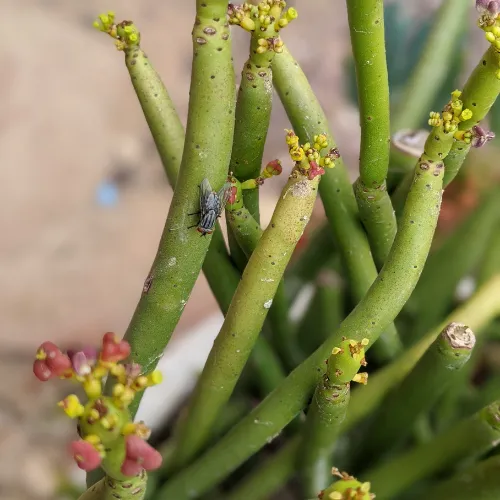
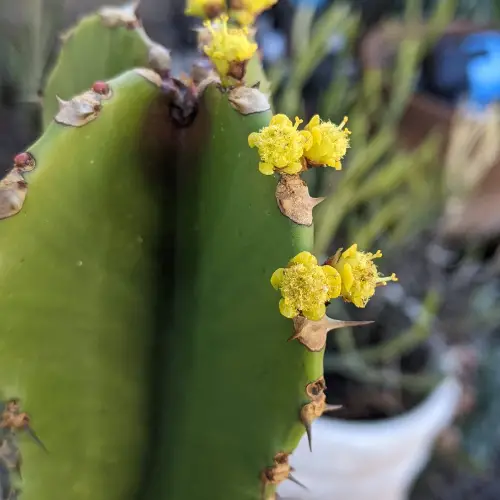
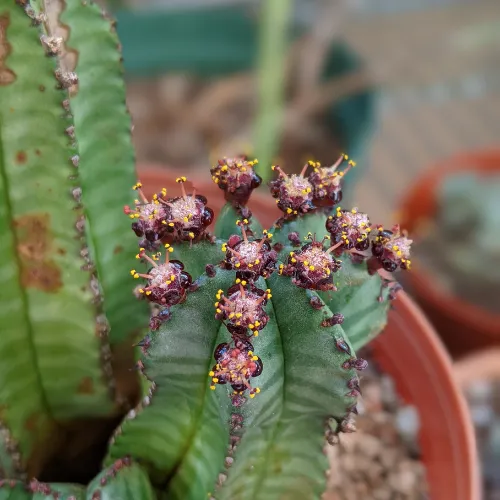
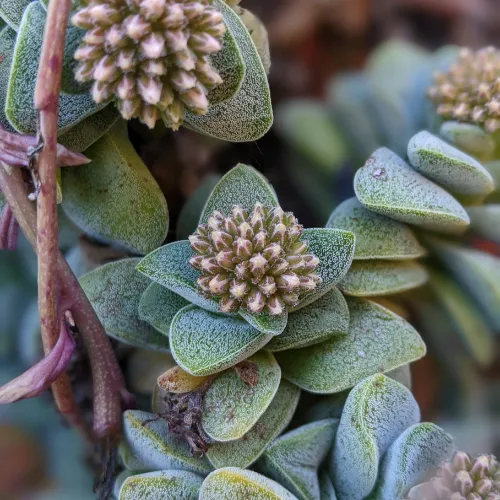
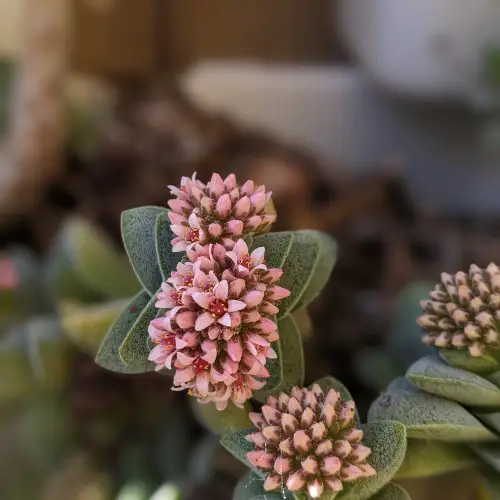
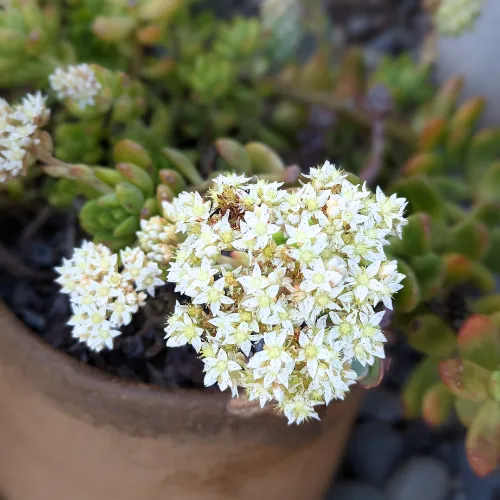
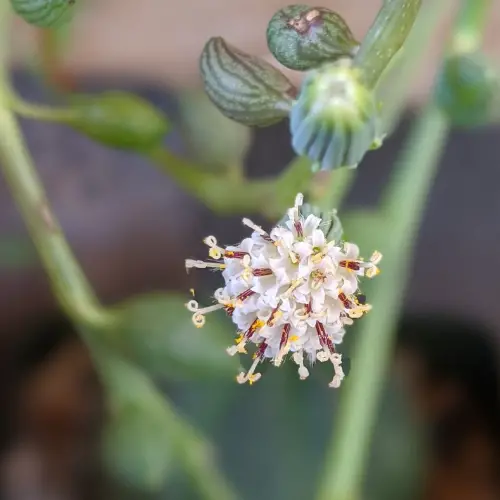
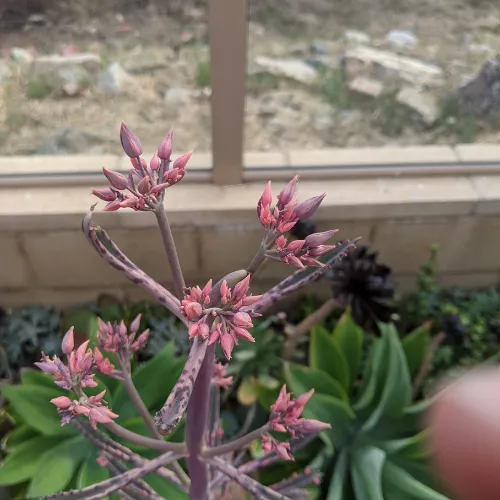
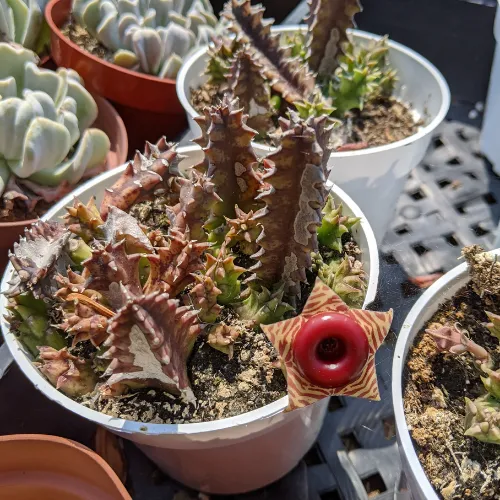
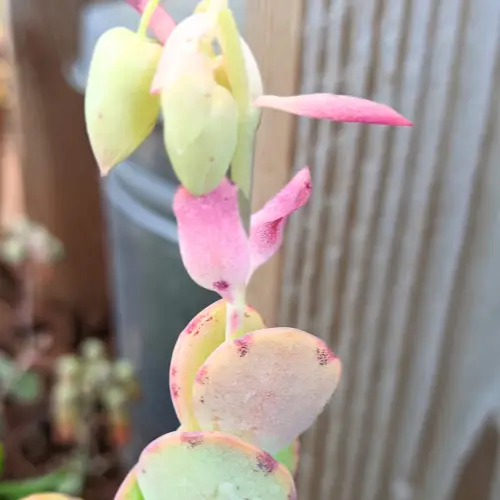
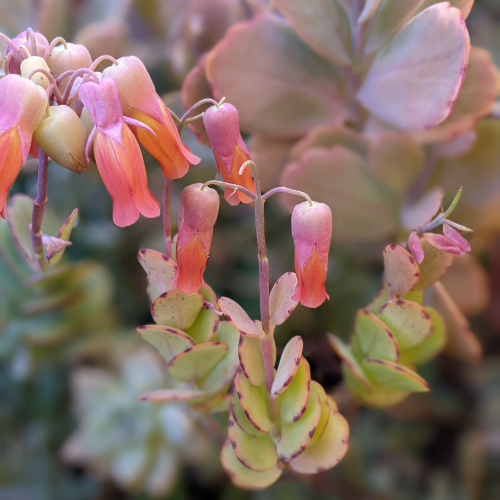
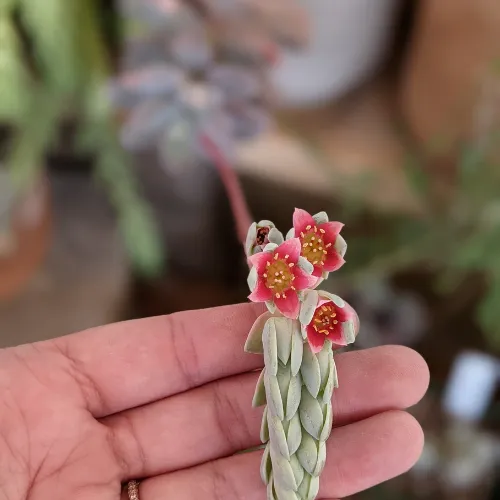
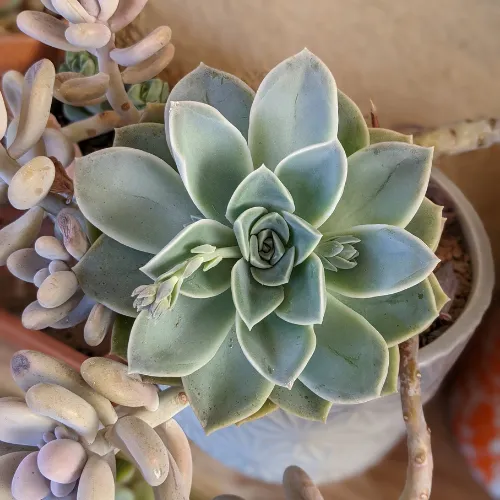
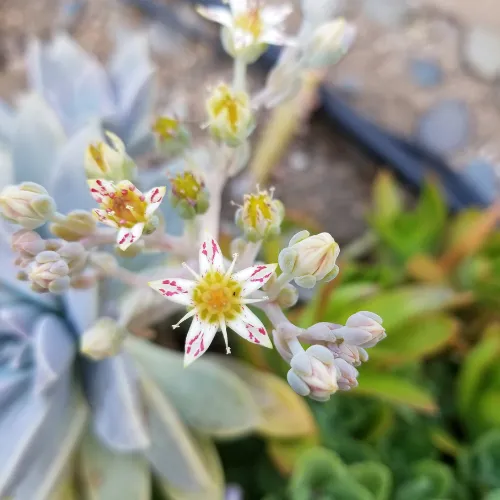
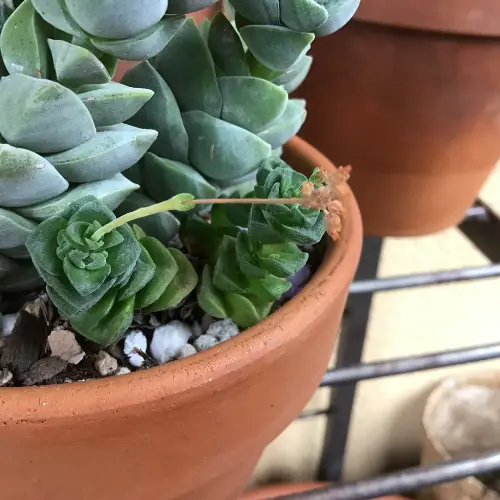
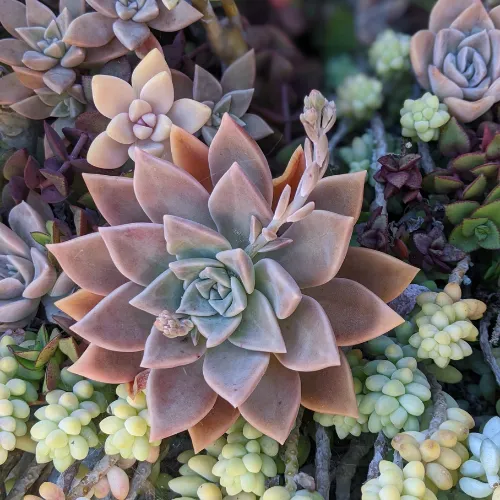
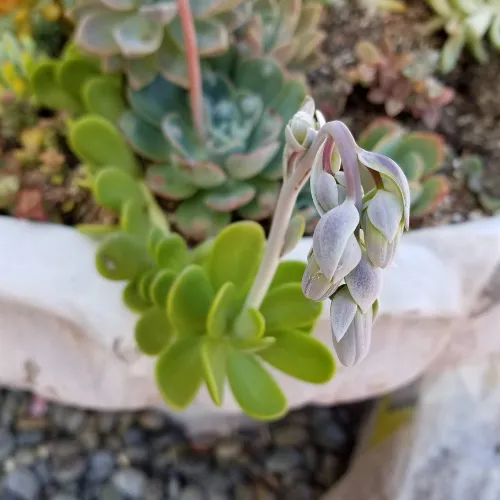
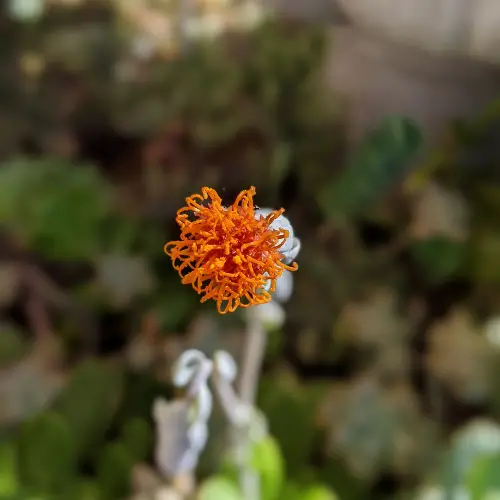
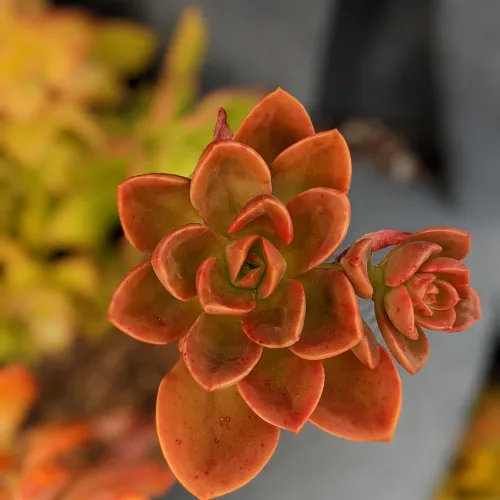
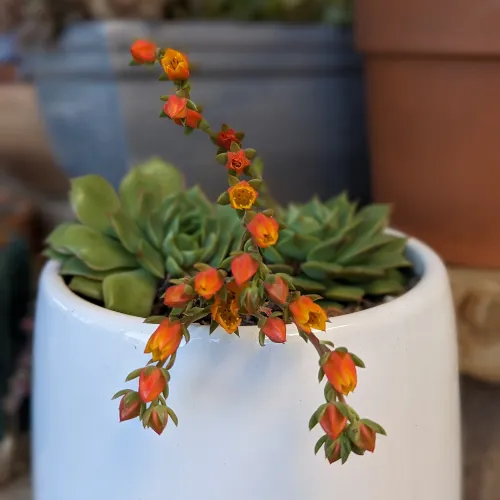
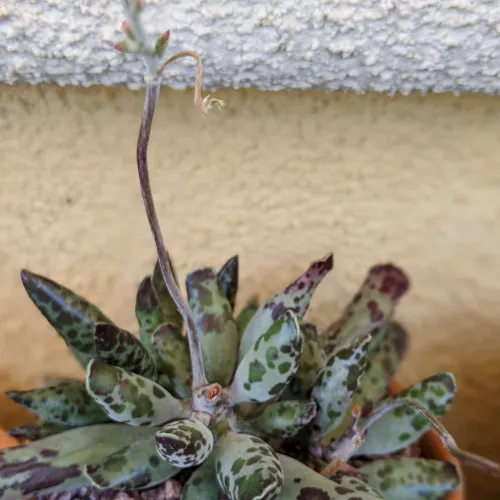
Death Blooms
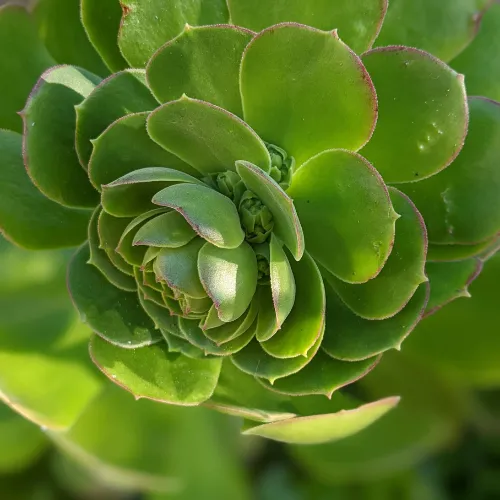
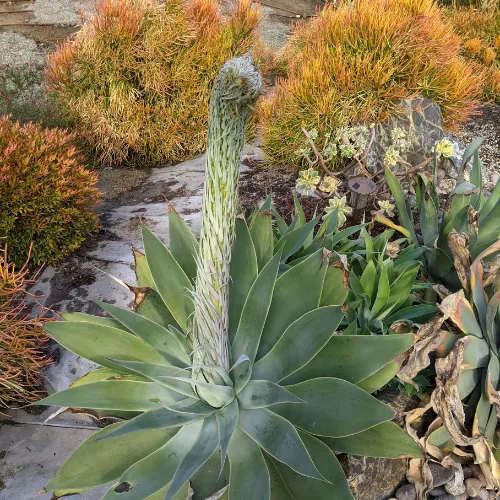
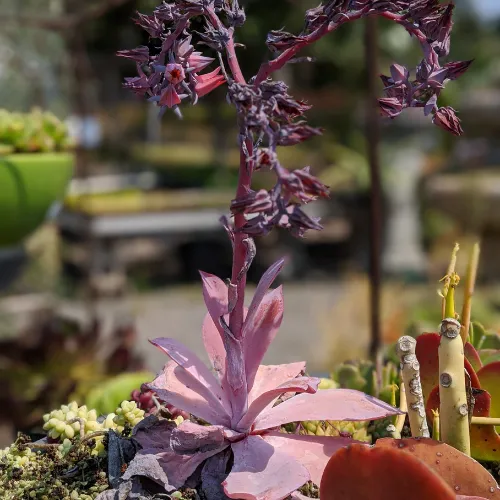
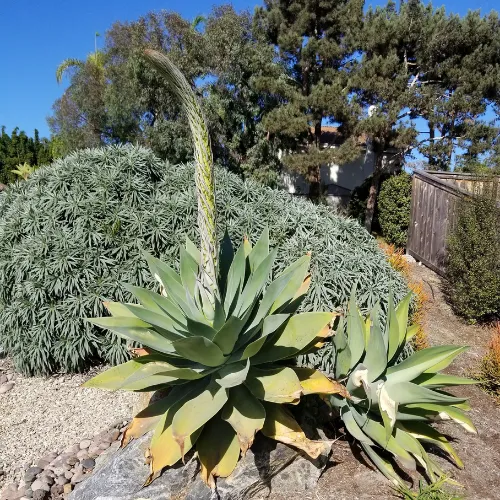
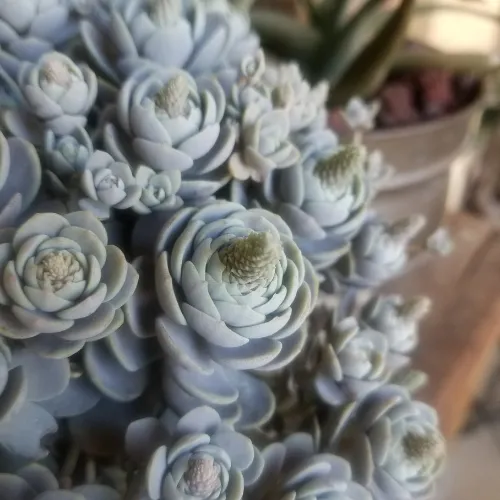
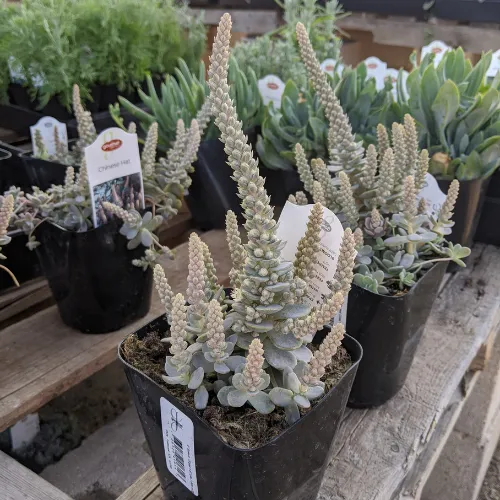

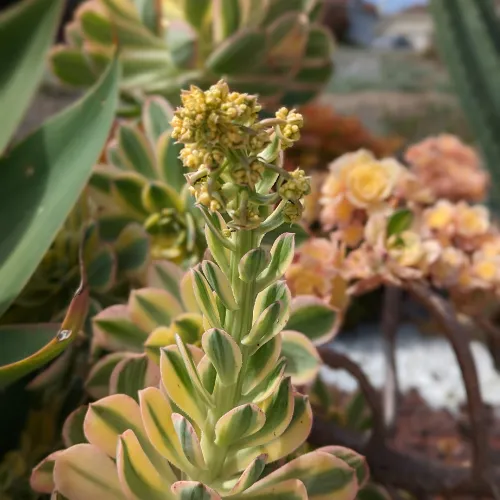
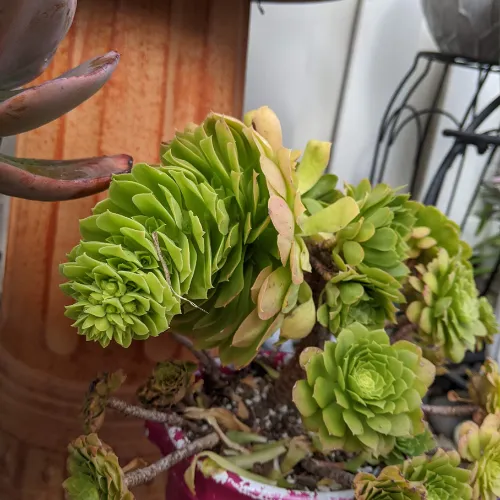
You might also like: Monocarpic Succulent Death Bloom: The Ultimate Guide to Growing and Caring for These Unique Plants and 4 Ways You Might Be Able to Save Yours
Why is my succulent growing a stalk?
Sometimes a long stalk is normal and part of the plant’s individual life cycle. In some cases, adjustment of sunlight, support, or trimming can help keep succulent growth compact if desired.
There are a few reasons why a succulent may start to grow a tall stalk or stem:
- Flowering – Many succulents form tall flower stalks as part of their natural flowering and reproductive cycle. This allows the flowers and seeds to be more visible and accessible for pollinators. One example of this would be a flowering ‘Century Plant’ aka Agave americana
- Etiolation – If a succulent doesn’t get enough sunlight, it can start elongating and stretching toward light. This etiolation causes long, weak growth.
- Top heaviness – Some succulents can become top heavy if the top portion grows faster than the root system can support. The plant then grows a stalk to raise up the top.
- Hybridization – Certain hybrid succulents are more prone to developing long stalks as part of their genetic tendencies.
- Type of succulent – There are some succulents like Kalanchoe that naturally form flowers on top of long stems as they mature.
- Seeking warmth – In cooler weather, some succulents start to stretch and lean towards heat sources like sunlight or grow lights.

Pups
Pups are miniature clones of the parent succulent that bud off at the base. You’ll see this a lot in Echeveria and Echeveria hybrids. Pups are kind of like babies for succulents and allow them to propagate naturally. If you see little succulent rosettes sprouting from the main plant, those are probably pups.
You might also like: Propagating Succulents 4 Ways: The Best Guide Ever
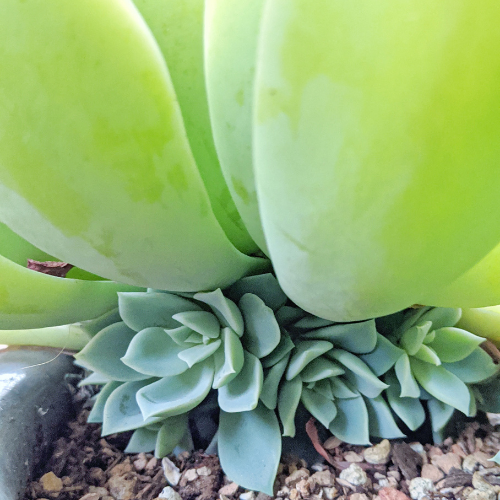
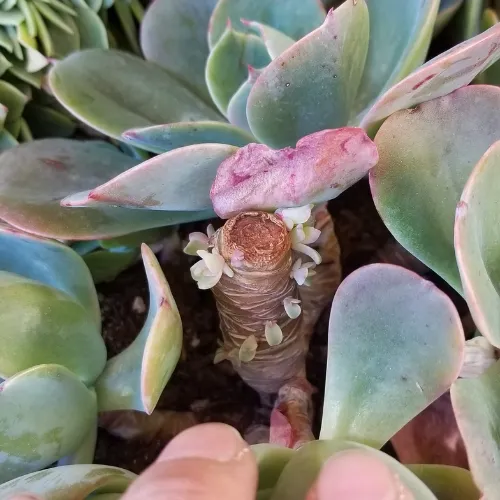
Runners
Some succulents, like Echeveria prolifica, produce long stems with roots that spread out along the soil surface and have little plants growing from the end . These are known as runners and allow the succulent to propagate itself through vegetative growth. Runners can take root anywhere along their length.
Click on the image below to support a small business and add Echeveria prolifica to your succulent collection!
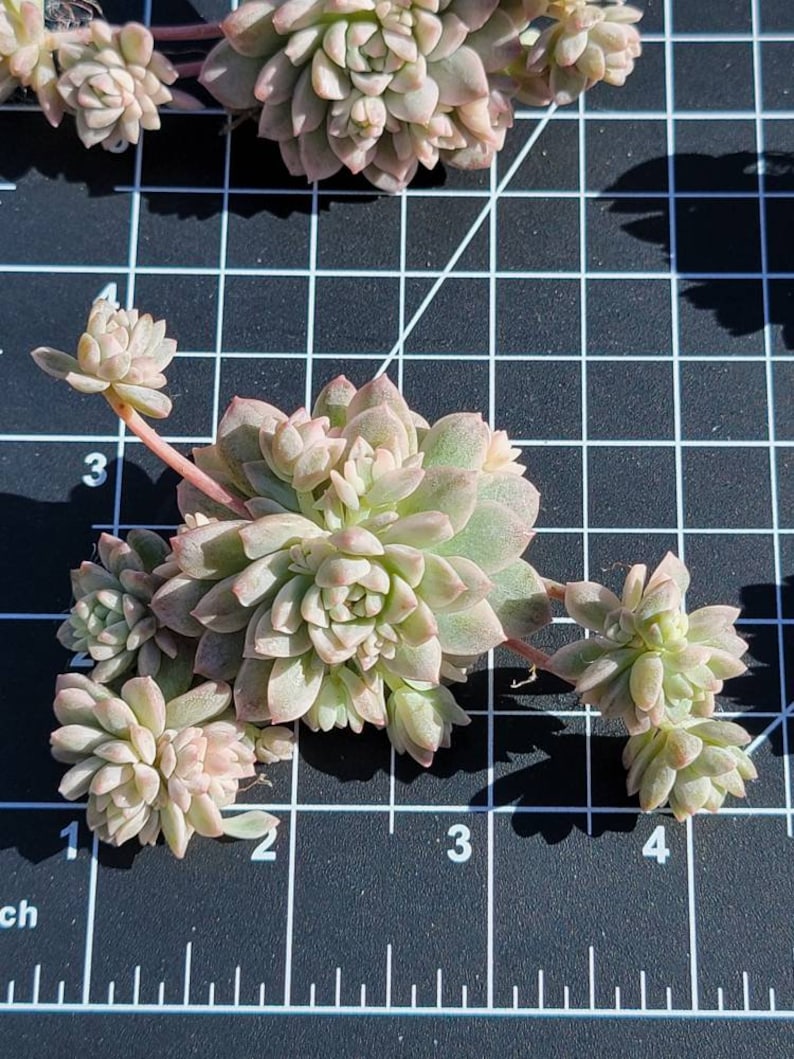
You might also like: Echeveria prolifica
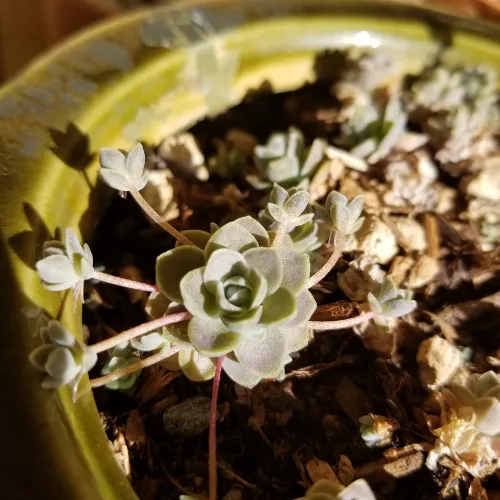
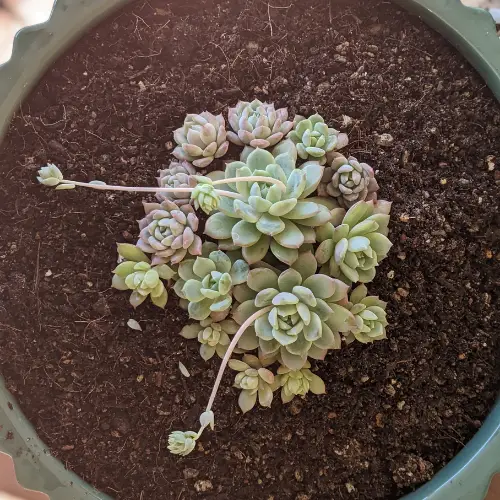
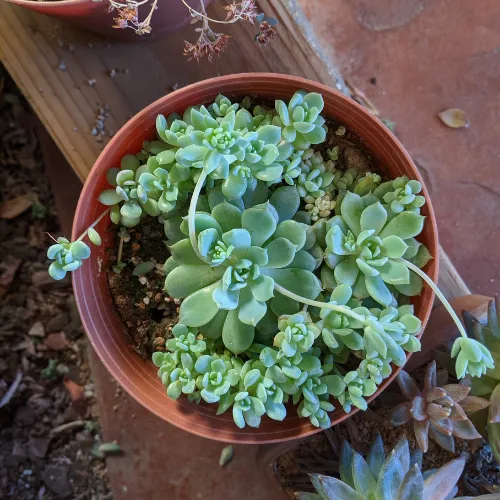
Aerial roots
As a response to low humidity or root rot under the soil
Occasionally succulents develop roots that extend out into the air, rather than anchoring in soil. These aerial roots are intriguing but mainly provide no benefit. The theory is that they’re trying to extract moisture from the air. They can often be removed without causing any harm. Also, check the roots under the soil to make sure they’re healthy.
Providing Support
Some succulents, like Kalanchoe marnieriana grow aerial roots which do anchor into the ground providing more support to the plant. More on aerial roots here: What are aerial roots? A guide to this interesting adaptation.
You might also like: Graptoveria ‘Fred Ives’ Complete Guide to Its Care
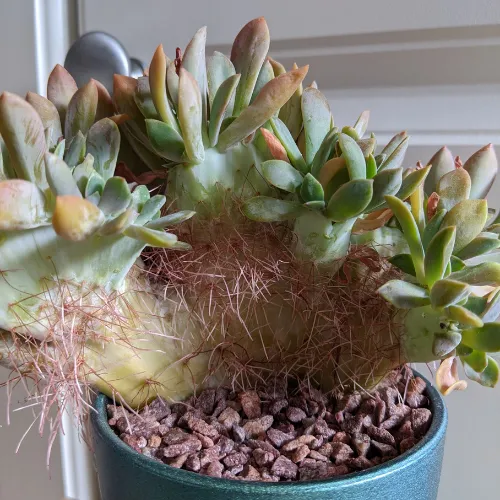
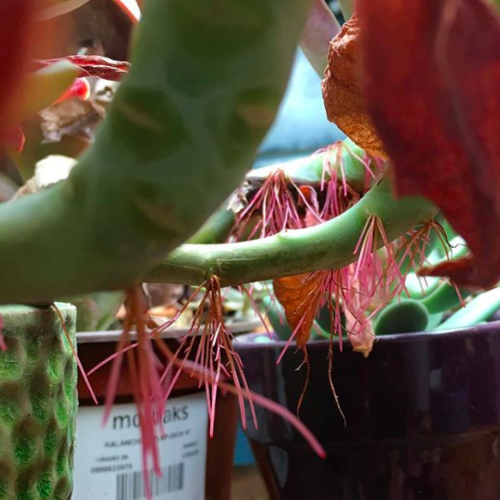
Root nodes
On succulents like ‘String of Bananas’ and other trailing succulents, root nodes grow out of the stem wherever it is making contact with the soil. They look like little bumps at first. They help anchor the succulent in the soil and create a more robust root system.
‘String of Watermelons’ (Senecio herreianus) tends to grow a lot of root nodes. Click on the image below to support a small business and purchase one from their Etsy shop!
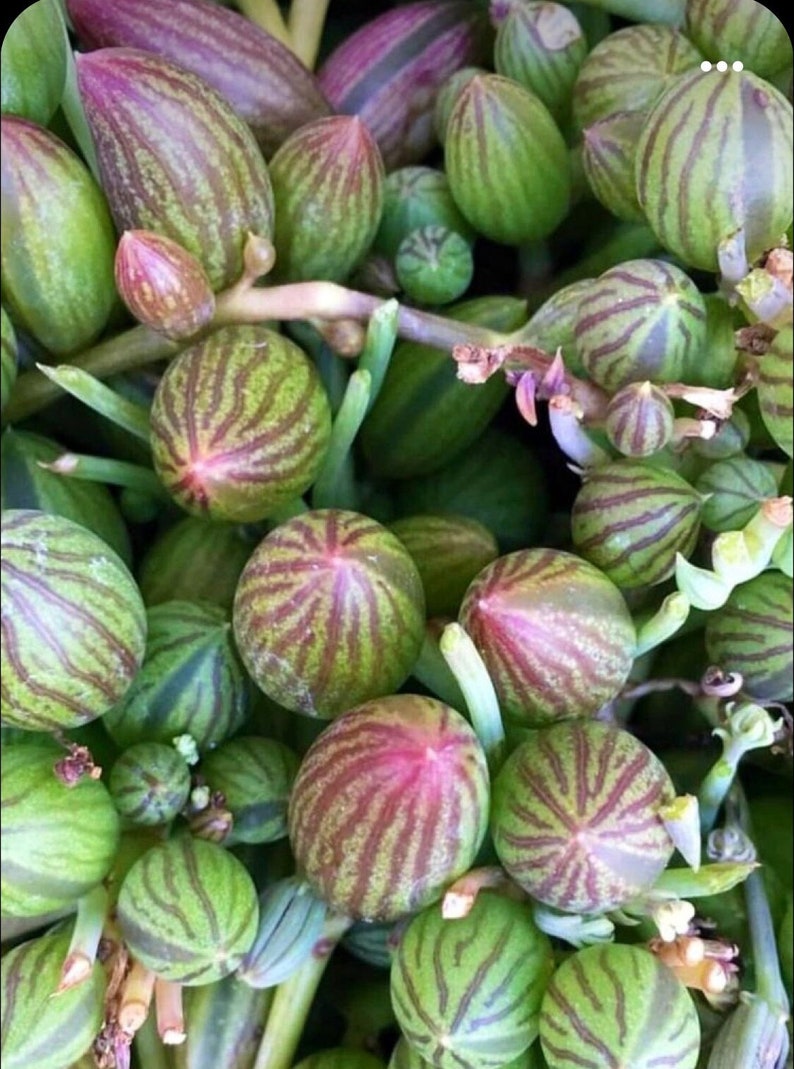
You might also like: ‘String of Blimps’ Senecio radicans: 7 Tips for Growing and Caring for This Interesting Succulent
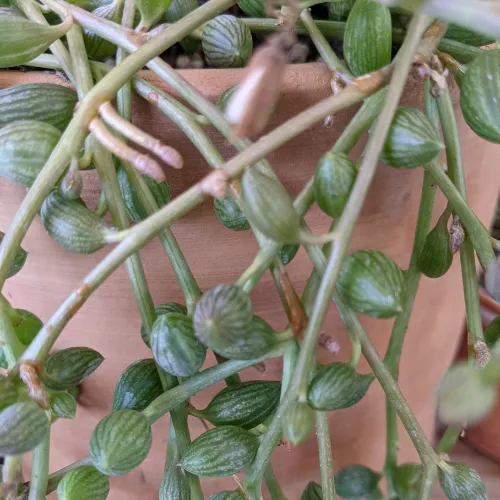
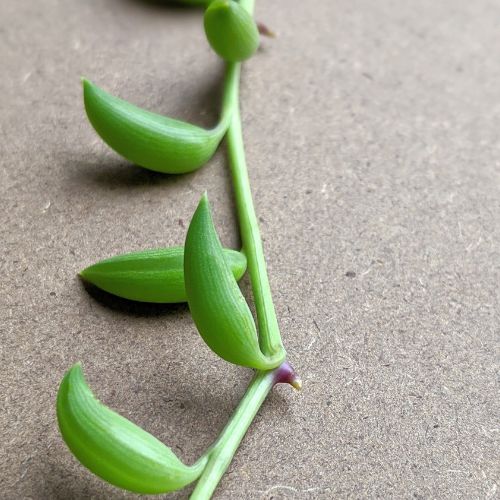
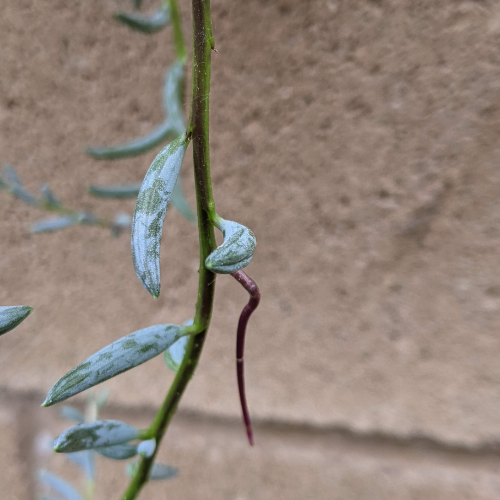
Offsets
Some succulents like Aloe and Agave (Century Plant) produce offsets which are clones that form from the roots underground. They have their own root system though so they can eventually become independent plants. Offsets are a way for succulents to spread out and colonize new areas. The offsets will often pop up yards away if grown in the ground. (Pictures to come)
You might also like: Agave Parryi: A Comprehensive Guide to This Hardy Landscape Succulent
Bonus:
How can I encourage my succulents to bloom?
If you want your succulents to bloom, try these helpful tips:
• Give them proper light. Most succulents require bright, indirect light to bloom. Direct sunlight may harm the leaves before they bloom. Place your succulents near a bright window that gets lots of indirect light.
• Decrease nighttime temperatures. Many succulents need a temperature drop at night, around 5-10 degrees F, to bloom. Make sure your succulents experience nighttime lows that match their blooming requirements.
• Limit fertilizer before blooming. About 6-8 weeks before your succulent’s desired blooming period, reduce or stop fertilizer usage. Low nitrogen levels encourage the production of flower stalks instead of excessive foliage.
• Prune your succulent. Trimming away dead or dying foliage, as well as some healthy leaves, will help your succulent focus its energy on blooming. Use clean, sharp pruners and be careful not to harm any potential flower stalks.
• Chill succulents for a cold period. Some succulents require exposure to cold winter temperatures to bloom. Place your plants in a cool area, around 45-55 F, for 12-16 weeks. Gradually bring them back to warmer temperatures to encourage blooming.
• Lengthen daytimes for long-day succulents. Some succulents require longer days to stimulate blooming. Use a grow light or dawn simulator to provide 16 hours of light per day for several months to trigger blooming.
• Be patient. Succulents usually need a certain level of maturity to bloom for the first time. If your succulent isn’t blooming, it may not have reached the proper age or size yet. Wait a few more growing seasons before assuming there’s a problem with blooming. With the right conditions and patience, most succulents will eventually bloom!
Why is my succulent growing tall instead of wide?
There are a few potential reasons why a succulent may grow tall instead of staying short and compact:
Not enough sunlight – Insufficient light exposure can cause a succulent to etiolate or stretch out as it reaches for the sun. This results in tall, weak growth.
Variety – Some succulent varieties naturally have an upright or columnar growth habit. Some Kalanchoe, cacti, Euphorbia, and some Senecio grow taller than wide.
Age – As some succulents mature over several years, they tend to increase in height faster than width. Mature plants often have tall stems holding rosettes.
Temperature – Cool weather can induce stretching as the plant aims for warmth. Lower light intensity in winter can also trigger height gain.
Crowding – When packed too densely, succulents stretch up and away from each other competing for light and space.
Insufficient pruning – Lack of pruning allows top-heavy rosettes to be supported by ever-lengthening stems.
Search for stability – If soil is too shallow or roots are unhealthy, the plant may grow upward seeking stability.
To encourage a more compact shape, provide ample sunlight, limit water, give more space between plants, and prune tall growth. But some vertical growth is normal for certain succulents.

Where to Buy Succulents Online

